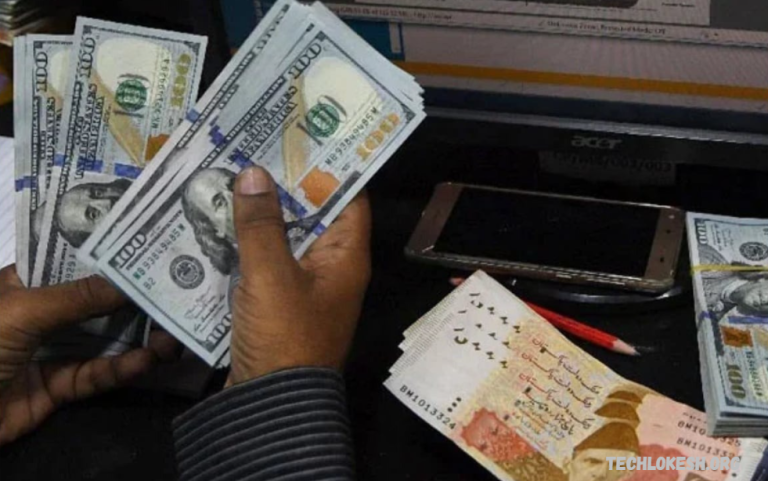Pakistan has achieved a significant economic milestone by posting a current account surplus of $2.1 billion, marking the first time in 14 years that the country has recorded such a positive balance. This development signals a noteworthy shift in Pakistan’s external economic position, reflecting stronger exports, increased remittances, and improved management of imports. After years of current account deficits that pressured the country’s foreign reserves, this surplus brings much-needed relief to Pakistan’s economy.
The surplus is a result of various factors, including government efforts to boost exports and contain imports, as well as a steady flow of remittances from overseas Pakistanis. These inflows have helped strengthen the country’s foreign exchange reserves, providing stability to the Pakistani rupee and easing pressure on the central bank. The surplus also indicates improved trade balance and better fiscal management, which are crucial for economic growth and investor confidence.
This positive turn in Pakistan’s current account is expected to have lasting benefits for the country’s financial health. It opens up opportunities for increased investment and economic development, while reducing reliance on external borrowing. Overall, the $2.1 billion surplus marks an important step toward greater economic resilience and stability in Pakistan after more than a decade of challenges.
Pakistan Records $2.1 Billion Current Account Surplus — A 14-Year First
Pakistan has made a remarkable economic breakthrough by recording a current account surplus of $2.1 billion, the first time in 14 years that the country has achieved such a positive balance. This surplus reflects a healthier external sector and comes as a relief after years of persistent deficits that strained the nation’s foreign reserves and currency stability. The achievement signals a turning point in Pakistan’s economic journey, showing signs of improved trade dynamics and financial management.
Several factors have contributed to this surplus, including a rise in exports, robust remittance inflows from Pakistanis abroad, and efforts to control non-essential imports. The government’s policies aimed at boosting local industries and diversifying export markets have played a vital role in strengthening the trade balance. Additionally, the steady flow of remittances has provided crucial support to the country’s foreign exchange reserves, helping stabilize the Pakistani rupee amid global economic uncertainties.
This positive development offers hope for Pakistan’s broader economic outlook. With a stronger current account position, the country can reduce its dependence on external borrowing and improve investor confidence. The surplus creates opportunities for increased investment, economic growth, and financial stability, marking a significant milestone for Pakistan as it seeks to build a more resilient and sustainable economy in the years ahead.
Economic Boost: Pakistan Achieves $2.1bn Current Account Surplus After 14 Years
Pakistan has achieved a significant economic boost by posting a current account surplus of $2.1 billion, a milestone it has not reached in 14 years. This positive balance indicates that the country is earning more from its exports and foreign income than it is spending on imports and foreign obligations. After years of running deficits that strained Pakistan’s foreign reserves and currency, this surplus marks an encouraging turnaround for the nation’s economy.
The increase in exports, combined with strong remittance inflows from Pakistanis working abroad, has played a crucial role in reaching this surplus. Government measures to control non-essential imports and promote local production have also helped improve the trade balance. These factors together have strengthened the country’s foreign exchange reserves and eased pressure on the Pakistani rupee, offering much-needed stability to the financial system.
This achievement not only reflects improved economic management but also sets the stage for future growth and investment. With a healthier current account position, Pakistan is better positioned to attract foreign investment, reduce external debt reliance, and build a more resilient economy. The $2.1 billion surplus is a positive sign that the country is moving toward greater financial stability after many years of economic challenges.
Pakistan’s Current Account Turns Positive with $2.1 Billion Surplus
Pakistan has successfully turned its current account positive by posting a surplus of $2.1 billion, a significant achievement after 14 years of persistent deficits. This milestone highlights an improvement in the country’s external economic position, signaling stronger exports and higher inflows from remittances. The positive balance eases pressure on Pakistan’s foreign exchange reserves and contributes to greater stability in the national currency.
The surplus is driven by a combination of increased export earnings, disciplined import management, and consistent remittance inflows from overseas Pakistanis. Government policies aimed at enhancing export competitiveness and controlling non-essential imports have played a critical role in this success. The rise in foreign currency reserves not only strengthens Pakistan’s financial outlook but also improves investor confidence in the economy.
This positive current account position marks an important step forward for Pakistan’s economic health. It reduces the country’s reliance on external borrowing and creates opportunities for sustainable growth and investment. The $2.1 billion surplus sets a hopeful tone for Pakistan’s economic future, demonstrating resilience and progress after years of financial challenges.
Read Also: FM Aurangzeb’s Urgent Push – Finalizing the US Trade Deal for Economic Growth
Pakistan’s $2.1 Billion Surplus Signals Economic Improvement After 14 Years
Pakistan’s recent announcement of a $2.1 billion current account surplus marks a significant economic improvement, the first in 14 years. This surplus reflects a positive shift in the country’s trade and financial balance, signaling that Pakistan is earning more from exports and foreign inflows than it is spending on imports and overseas obligations. After years of deficits that put pressure on foreign reserves and the currency, this development offers a much-needed boost to the nation’s economy.
Several key factors have contributed to this surplus, including increased exports, strong remittances from overseas Pakistanis, and efforts to manage import levels more effectively. Government policies aimed at promoting export growth and encouraging local production have also played an important role. These combined efforts have strengthened Pakistan’s foreign exchange reserves, helping stabilize the rupee and restore investor confidence.
The $2.1 billion surplus sends a positive signal about Pakistan’s economic direction. It reduces the country’s dependence on external borrowing and opens doors for greater investment and sustainable growth. This milestone not only reflects improved economic management but also sets the foundation for a more resilient and stable economy in the years ahead.
After Years of Deficit, Pakistan Posts $2.1 Billion Current Account Surplus
After years of running persistent current account deficits, Pakistan has finally posted a surplus of $2.1 billion, marking a major turnaround in its external economic position. This is the first time in 14 years that the country has achieved a positive current account balance, reflecting improved trade performance and stronger inflows of foreign currency. The surplus signals relief for Pakistan’s economy, which has struggled with foreign exchange pressures and currency instability for over a decade.
This positive development is driven by a combination of factors, including increased exports, robust remittance inflows from overseas Pakistanis, and government measures to curb unnecessary imports. Efforts to promote local industries and diversify export markets have also contributed to improving the trade balance. The resulting boost in foreign reserves helps stabilize the Pakistani rupee and reduces the need for costly external borrowing.
The $2.1 billion surplus is a significant milestone that offers hope for Pakistan’s economic future. It not only strengthens the country’s financial position but also builds confidence among investors and international partners. Moving forward, this surplus lays the groundwork for sustainable growth, greater economic stability, and reduced vulnerability to external shocks.
Frequently Asked Questions
How does controlling imports help achieve a current account surplus?
Reducing non-essential imports lowers foreign currency outflows, improving the trade balance.
What impact does this surplus have on the Pakistani rupee?
A surplus helps stabilize or strengthen the rupee by boosting foreign exchange reserves.
Can this surplus lead to more foreign investment in Pakistan?
Yes, a stable current account and stronger economy can increase investor confidence and attract investment.
What challenges remain despite the current account surplus?
Challenges include sustaining export growth, managing debt, and ensuring long-term economic stability.
Is this surplus expected to continue in the future?
While promising, sustaining the surplus depends on continued export growth, remittance inflows, and prudent economic policies.
Conclusion
Pakistan’s achievement of a $2.1 billion current account surplus after 14 years is a significant milestone that reflects positive progress in its economic management. This surplus not only eases pressure on foreign reserves and stabilizes the currency but also boosts investor confidence and reduces the country’s dependence on external borrowing. While challenges remain, this development lays a strong foundation for sustainable growth and greater financial stability. Moving forward, continued focus on enhancing exports, managing imports, and encouraging remittances will be key to maintaining this positive momentum and securing a more resilient economic future for Pakistan.

